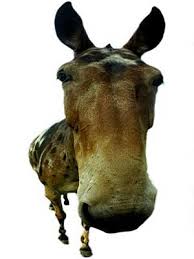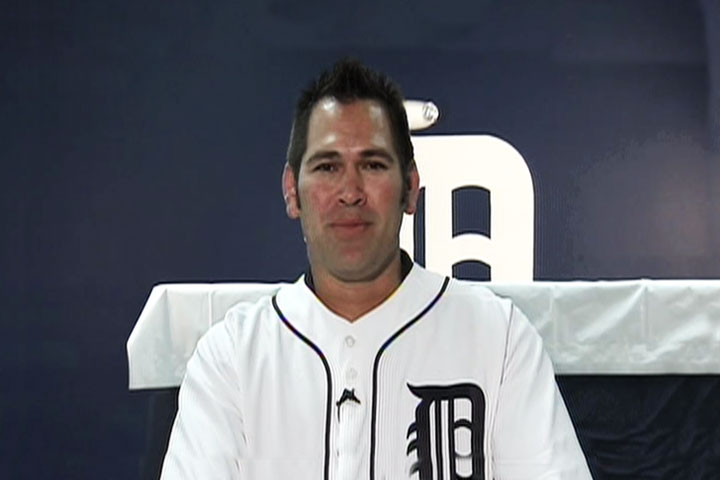At this point, Royals fans have memorized the oral history of the Carlos Beltran trade. In the most basic of terms, the team traded their biggest (and arguably only) star for: Mike Wood, John Buck, and Mark Teahen. All three of those players are no longer with the club. Mike Wood never amounted to much, John Buck had his moments and left for free agency, and then there was Mark Teahen.


He was easily the best player gained from letting go of Beltran. And what a gain it was. Though he was by no means Beltran, he played virtually every position he could during his tenure with the team (the only ones he didn't play were shortstop, catcher, and pitcher). He was at least average at anything the club asked him to do, and they asked a lot. Teahen became the poster child for "super-utility", getting comfortable with being moved from 1B,to 2B,to 3B, to LF, to RF, and CF. In all honesty, however, he was a man without a position on the Royals.
First base belonged to Billy Butler, second base to Alberto Callaspo, and the outfield to essentially David DeJesus and whoever else needed a position that day. Teahen was at his best offensively and defensively when playing third. He was relieved of those duties to make way for the sometimes promising Alex Gordon, a move that might not have been ideal in retrospect...but one I really can't blame the Royals for trying.
His numbers were up and down once his position was regularly shifted. Maybe the lack of stability got to his head, but overall his offensive production was (though down) still welcomed on a club that had little offense to begin with.
Teahen's salary was creeping up year by year...they didn't really have a position for him...they allegedly needed to make some payroll reductions...and they were hungry, as always, for more infield position players. Teahen had been linked to trade rumors before, but the rumor of him being dealt to the White Sox stuck and he was soon off to Chi-Town. In return, the Royals received a young speedy second basemen in Chris Getz and "third basemen" Josh Fields. The trade has long been final...what's done is done. So, what did the Royals get for the last piece of the Carlos Beltran trade? What did they lose? Statistics, though never perfect, are a way to separate the emotional aspect of a trade and look at the objective impact of what took place. General manager Dayton Moore has historically failed to bring in statistically better players offensively and defensively (ptichers have been hit and miss).

For the upcoming season, here is a look at the projections of various statistics for Teahen, Getz and Fields (Alex Gordon's projections are listed at the bottom, seeing as he is man who is truly "replacing" Teahen):
UZR (Ultimate Zone Rating)- what does it mean? The most simplistic way to interpret the stat is to think of it as runs a player is putting on the board DEFENSIVELY. In other words, are their efforts in the field keeping teams from scoring, or helping the opposition cross home plate.
UZR (projected) for 2010:
Teahen-
-5.7Getz-
-1.1Fields-
-4.2Gordon- +0.8My interpretation of this data is as follows: I don't see Fields getting a lot of time at third, but I am trying to give the Royals the benefit of the doubt. So, Teahen is -5.7 and Getz/Fields is -5.3. In the end, it doesn't appear that either one of the newly acquired Royals are going to be a complete liability at their position.
Fangraphs.com has recently added wOBA to their statistic arsenal. I have read a little about the stat (probably just enough to make misuse of it) and thought we might take a look at the 2010 projections for the aforementioned threesome. What is wOBA? Essentially weighted on base average. wOBA takes the relative impact of getting on base into account. In other words, a home run is weighted around twice as much as a single. I felt that it might give us a better indicator of offensive impact than OPS.
2010 projected wOBA:
Teahen- .331
Getz- .319
Fields- .326
Gordon- .365Again, Teahen is the better player with Fields showing some potential.
Finally, a look at WAR (Wins above replacement).
2010 projections:
Teahen- 1.4
Getz- 1.3
Fields- 0.5
Gordon- 4.1Overall, the trade is neither good nor bad. The strangest thing to consider is that the Royals have (in a round about way) traded Carlos Beltran for Chris Getz and Josh Fields. Most importantly, it saves the Royals a little money, they have one less "man without a position" on the roster, a potentially decent second baseman in Chris Getz, and a third basemen in Alex Gordon that could still end up being a better player than Mark Teahen.












